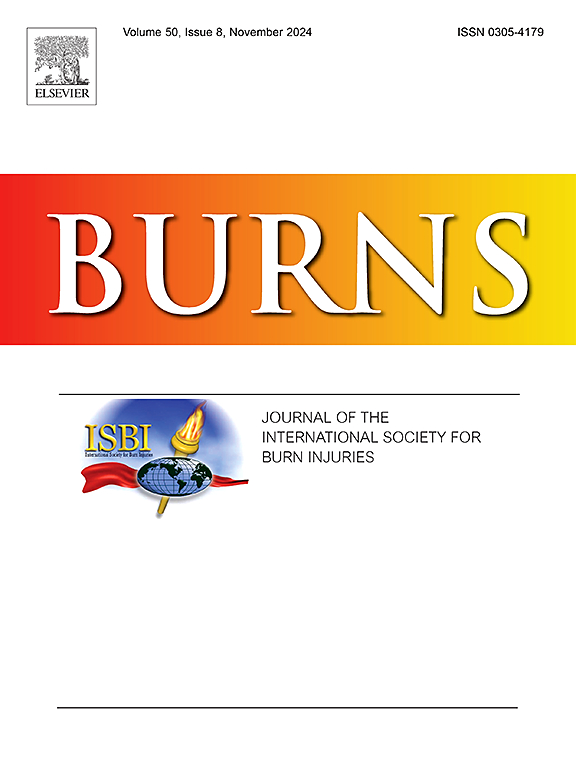The effect of nitrile gloves on temperature perception during hot water immersion
IF 3.2
3区 医学
Q2 CRITICAL CARE MEDICINE
引用次数: 0
Abstract
Introduction
Scalds account for 40 % of burn injuries in developed countries, with a subset occurring during caregiving activities, particularly when gloves are worn. Gloves, a standard precaution against infection and body fluid exposure, may impair sensory feedback critical for detecting temperature changes, potentially increasing the risk of burns during personal care tasks.
Methods
This study investigated the impact of glove use on heat perception. Twelve healthy participants (6 male, 6 female) immersed their index fingers in water baths set at 40°C, 45°C, 50°C, 55°C, and 60°C. Heat perception thresholds were assessed under three conditions: no gloves, single gloves, and double gloves. Participants withdrew their fingers upon feeling discomfort, and the withdrawal temperatures were recorded.
Results
Our trial showed that gloves significantly delayed heat discomfort detection, with the longest delays observed at 50°C and 55°C when double gloves were worn. Wearing a single glove raised the discomfort threshold by approximately 5°C, while double gloves increased it by 10°C. This logarithmic relationship between temperature and perception delay indicates a substantial sensory alteration, especially at higher temperatures.
Conclusion
The findings underscore the heightened risk of scald injuries in vulnerable individuals due to delayed heat detection caused by gloves. Awareness of altered temperature thresholds during glove use is essential to prevent burns during caregiving tasks, particularly in activities requiring precise temperature assessment, such as bathing or showering. Enhanced education and preventive measures are crucial for ensuring safety in these contexts.
求助全文
约1分钟内获得全文
求助全文
来源期刊

Burns
医学-皮肤病学
CiteScore
4.50
自引率
18.50%
发文量
304
审稿时长
72 days
期刊介绍:
Burns aims to foster the exchange of information among all engaged in preventing and treating the effects of burns. The journal focuses on clinical, scientific and social aspects of these injuries and covers the prevention of the injury, the epidemiology of such injuries and all aspects of treatment including development of new techniques and technologies and verification of existing ones. Regular features include clinical and scientific papers, state of the art reviews and descriptions of burn-care in practice.
Topics covered by Burns include: the effects of smoke on man and animals, their tissues and cells; the responses to and treatment of patients and animals with chemical injuries to the skin; the biological and clinical effects of cold injuries; surgical techniques which are, or may be relevant to the treatment of burned patients during the acute or reconstructive phase following injury; well controlled laboratory studies of the effectiveness of anti-microbial agents on infection and new materials on scarring and healing; inflammatory responses to injury, effectiveness of related agents and other compounds used to modify the physiological and cellular responses to the injury; experimental studies of burns and the outcome of burn wound healing; regenerative medicine concerning the skin.
 求助内容:
求助内容: 应助结果提醒方式:
应助结果提醒方式:


